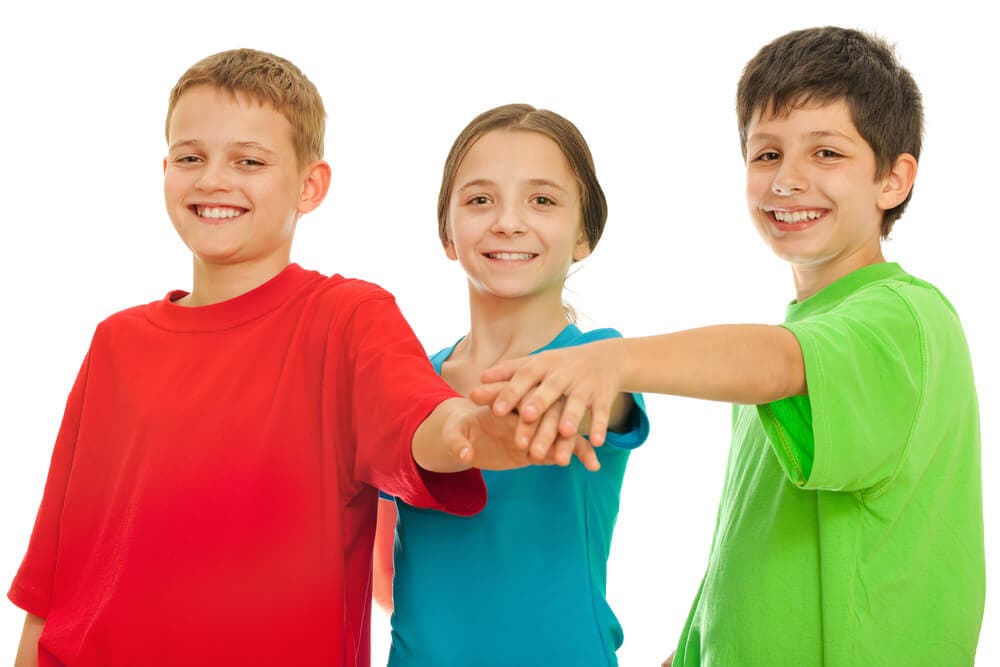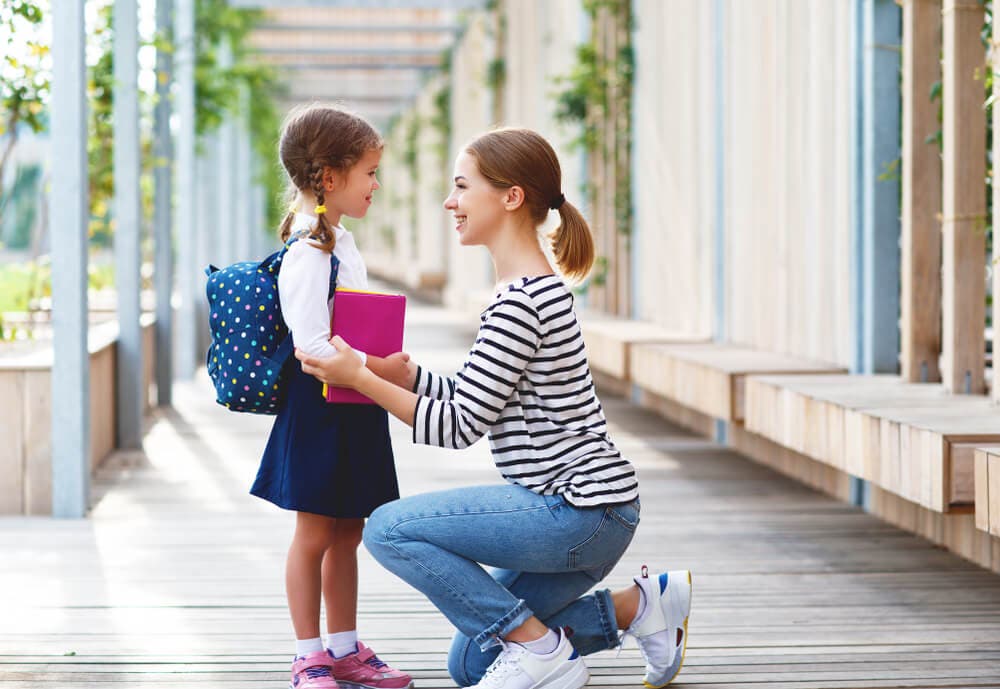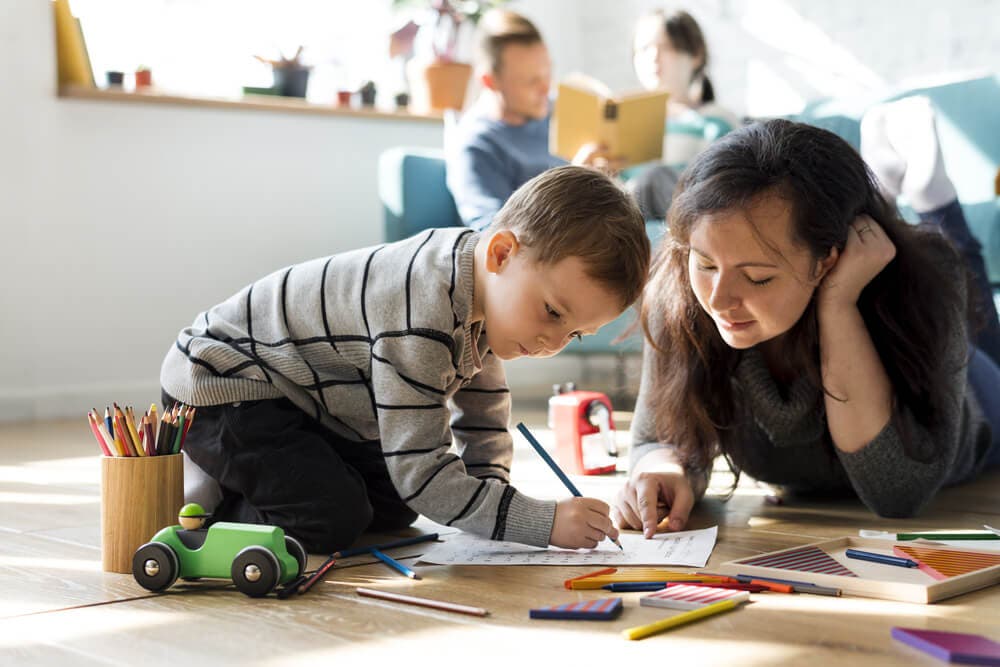
Remember when you learned how to set goals? If you have trouble answering this question, you are not alone! Most of us don’t spend much time thinking about how we set our goals.
In fact, many of us don’t even think of goal setting as a skill; rather, it’s something we do without much thought.
However, goal setting is a practice that works on a set of specific skills, and fortunately, these skills are relatively easy to teach.
As with most skills, it is best to start teaching goal setting early. While parents are perhaps the best source of skill development for their children, it is vital to have some goal-setting material in the school curriculum as well. Learning goal setting at school and seeing goal setting modeled by peers and teachers is a great way to encourage effective goal setting in children.
An Overview of Goal Setting in Education

Goal setting is a vital practice that can benefit anyone who has a dream or vision for their future. Young people who are just beginning the big journey of their lives are at a particularly opportune time to start developing goal-setting skills – skills that will not only serve them throughout their lives, but will also help them to build the present, to put their future together.
Parents can – and certainly should – encourage goal setting in their children, but the importance of this skill justifies its inclusion in the curriculum of our schools. The world of education is the perfect place to introduce children to goal setting, to lay the foundations for effective goal setting and to start practicing setting and striving towards personally meaningful goals. Or you can also contribute to workshops that do just that.
How Children Benefit from Goal Setting

In addition to helping them believe in themselves and achieve success at school, goal setting benefits children and students in many ways, including
- Improving your self-image
- Increasing awareness of strengths
- Increasing awareness of one’s weaknesses
- Providing experience of success
- Facilitating effective visualization
- Clarifying the way forward
- Encouraging prioritization
- Defining reality and distinguishing it from wishful thinking
- Creating responsibility for oneself
- Improving decision making
These are the general benefits of smart goal setting and goal setting that anyone who makes the effort can achieve, but a few of them can be particularly effective for children.
The benefits of goal setting for young people include:
- It provides the direction that most young people are looking for or striving for.
- It helps children to clarify and focus on what is important to them.
- Facilitates more effective decision-making through better self-awareness, orientation and focus.
- It enables children to take a more active role in building their own future.
- It acts as a powerful motivator by giving children something to hope for and aspire to.
- It gives children a positive experience of achievement and personal satisfaction when they reach a goal.
- It helps children find a sense of purpose in their lives.
Using Goal Setting Effectively in Children and Young People:
According to Education World, there are six key secrets to successful goal setting that you can pass on to your children:
- Write clear and measurable goals.
- Create a specific action plan for each goal.
- Read your goals daily and imagine achieving them.
- Reflect on your progress to see if you are on target.
- Revise your action plans if necessary.
- Celebrate your achievements.
Goal Setting Examples

- Specific – Don’t say “I want to get better grades in school”,
Say, “All my grades on my report card are 85 and above.”
- Measurable – Make sure your goal is measurable; .
- Achievable – Keep your goals attainable;
Don’t say “I will be better in my next attempt”, say “I will increase my net score by 5 in all branches in the next attempt”.
- Realistic and Relevant – Goals need to be realistic and relevant to the student in order to be achieved; if the student doesn’t care about his/her grades, he/she will not care about the goal.
- Time Limited and Trackable – Encourage students to put a realistic time frame on their goals; don’t set a goal to improve your grades next week or next year, set a goal to improve your grades by the time of your next progress report or by the end of the semester.
Some Questions to Evaluate the Functioning of Your Goal Table
- I’m good…( in math)
- I am bad…( in English)
- What will I improve (effective use of time)?
- How can I make these improvements (with the support of an expert)?
- What will I do if my plan doesn’t work? (I will prepare a new plan)
8 Goal Setting Activities for Middle School Students

1. Make a Family Bucket List
Making a bucket list is a great way to set goals and this activity engages the whole family in the practice of goal setting. It’s a great way to model goal setting and encourages your children to practice at the same time.
Here’s how to do this:
- Get your family together and gather a piece of paper and some pens.
- Brainstorm a list of achievements, experiences or success goals you would like to work on as a family in the coming year.
- At the end of the year, look back at your list and see what you have achieved. Celebrate the goals you have achieved as a family.
- You can suggest using online tools like Trello or Evernote to help your children create this bucket list and/or create one for themselves.
2. Draw a wheel of fortune

Wheel of Fortune is a fun way to introduce goal setting in different areas of life. It will show your children that you don’t need to limit your goals to school or work, you can set goals in all areas of life.
Follow these steps to create and use a wheel of fortune:
- Draw a circle and cut it into equal pieces (as if you were cutting a pizza into slices).
- On each piece, write one important area of life, for example, “Family”, “Friends”, “School/Work”, “Hobbies”, “Health” and “Fun”.
- For each area, have your child write down the goals they want to achieve. Make sure he/she keeps the goals on a specific timeline (e.g. one month, 3 months, one year).
Make sure to help him/her track his/her progress along the timeline you have chosen.
3. Create a Vision Board

Vision boards are a great way to plan your big goals that are particularly meaningful to you. Helping your children or students create a vision board will challenge them, make them think about what is most important to them and encourage them to stay motivated in achieving their goals.
Here is how to create an effective vision board:
- Collect some old magazines (you can also draw pictures, use newspapers, print out some pictures, etc.) and ask your students to cut out some pictures representing their hopes and dreams for the future.
- Help your children place the pictures on a piece of cardboard and use glue to secure them in place. You can also provide glitter, stickers, ribbons, markers and anything else they might want to decorate their vision boards.
- Ask your children to explain what each picture represents and how they plan to work towards this goal.
4. Play 3 Stars and a Wish
This is a fun and easy game to play with your students or children, helping them to start thinking about their goals.
It is an easy activity with simple rules:
- Ask your children to find three “stars” or things they are good at. The sky is the limit for this activity – what they are good at can be anything from a subject at school to a quality that makes them a good friend.
- Now that they have three stars, tell them to come up with a “wish” to complete their star; the wish should be something the children need to work on or want to get better at. Again, they are limited only by their imagination. They can choose any goal as long as it is meaningful and important to them.
This activity will not only help them find important goals, but will also help them develop the self-confidence they need to succeed,
5. Ask Fun Questions

Asking questions is a great way to get your children thinking about what is important to them, what they want to achieve and how they can get there.
There are tons of fun questions out there, but here are a few examples to help you get started:
- Ask your children “What would you do if you won the lottery?” or “If you had a superpower, how would you use it?”
- Listen to their answers and encourage them to be detailed.
- Discuss how they can take their destiny into their own hands by making a plan to realize the hopes, goals and dreams they identified in their answers.
Continue the discussion as often as possible to make sure they are still thinking about their long-term goals and actively planning ways to achieve them.
6. Interest Maps
Interest maps are best for older students, so you may want to save this for middle school students.
Here’s how to help your children create an interest map:
- Ask your children to think about what they like to do. Do they like art? Science? Writing? Sports? Have them think of all their interests and favorite things to do and write them down.
- Help them look at their list of interests and see if they can find any patterns; for example, maybe many of their interests involve helping others or being outdoors.
- Have them create an interest map by creating a network of circles and filling them with their interests in a meaningful way.
- Based on their interest map, help them create relevant and meaningful goals for themselves.
This activity will help your students learn more about themselves, which is a vital prerequisite for setting good goals.
7. New Year Thoughts and Resolutions

Children of secondary school age are likely to grasp the ritual that determines their New Year’s resolutions. They will also be at an age when they show more agency and choice in relation to their studies and extracurricular activities.
Making New Year’s resolutions a ritual not only serves as a great opportunity to set goals, but also provides an opportunity to encourage children to reflect on the challenges and triumphs of the previous year, fostering gratitude and a sense of accomplishment.
To facilitate this activity, ask your child to think about some of the following questions:
- What are you most proud of having achieved last year?
- What do you think you could have done better last year?
- What is something you felt particularly passionate about last year?
- What new goal would you like to achieve in the new year?
- What behavior do you want to stop in the new year?
- What is the behavior you want to start doing in the new year?
- What is one new thing you would like to try in the New Year?
This is a great exercise to do together as a family. In this way, you as an adult can also identify your reflections and set new goals in your personal or professional life. This will allow you to set an example for your children who may want to set goals for their school, sports or other extracurricular activities.
8.My Goals Worksheet
This worksheet is an effective tool to encourage children to think more about their goals and plan how to achieve them.
At the top of the worksheet, there is a box for them to set their goals and a box for them to note the target date for the completion of their goals.
They are then asked to identify three actions that will enable them to achieve their goals. These should be relevant and realistic actions that will lead them to complete their goal by the target date.
At the bottom, there is a space to explain how they will know when they have reached their goal (e.g. what it will look like when they reach their goal, what the outcome will be). They are also asked to find two things that will help them keep working towards their goal (e.g. an encouraging friend, a motivating thought).
Read also:
- Goal setting for students, children and young people
 Remember when you learned how to set goals? If you have trouble answering this question, you are not alone! Most of us don’t spend much time thinking about how we set our goals. In fact, many of us don’t even think of goal setting as a skill; rather, it’s something we do without much thought.… Read more: Goal setting for students, children and young people
Remember when you learned how to set goals? If you have trouble answering this question, you are not alone! Most of us don’t spend much time thinking about how we set our goals. In fact, many of us don’t even think of goal setting as a skill; rather, it’s something we do without much thought.… Read more: Goal setting for students, children and young people - Challenged children and their parents
 Conflict between parent and adolescent is an opportunity for communication. Conflict arises from two different ways of looking at the same issue. Young people and parents are often in conflict when they disagree about what is desirable, what is appropriate, what is right, what is wrong, what is allowed, what is needed, what has happened,… Read more: Challenged children and their parents
Conflict between parent and adolescent is an opportunity for communication. Conflict arises from two different ways of looking at the same issue. Young people and parents are often in conflict when they disagree about what is desirable, what is appropriate, what is right, what is wrong, what is allowed, what is needed, what has happened,… Read more: Challenged children and their parents - Types of fun summer activities for childrens
 Parents tried to make the pandemic easier for their children. Any technical rules and limits were almost off limits. We tried to keep them busy by binge-watching Netflix with them or enlivening family game night. There have been walks, bike rides and even tik tok video making. But let’s be honest, our teens got fed… Read more: Types of fun summer activities for childrens
Parents tried to make the pandemic easier for their children. Any technical rules and limits were almost off limits. We tried to keep them busy by binge-watching Netflix with them or enlivening family game night. There have been walks, bike rides and even tik tok video making. But let’s be honest, our teens got fed… Read more: Types of fun summer activities for childrens - 13 Foods You Can Eat While Pregnant
 Are you pregnant? Are you hungry? Looking for a snack that will make your tummy and baby happy? You probably hear this a lot: Eating nutritious food is very important when you are pregnant. We are here to make your pantry a one-stop shop for healthy and delicious food that will give your baby the… Read more: 13 Foods You Can Eat While Pregnant
Are you pregnant? Are you hungry? Looking for a snack that will make your tummy and baby happy? You probably hear this a lot: Eating nutritious food is very important when you are pregnant. We are here to make your pantry a one-stop shop for healthy and delicious food that will give your baby the… Read more: 13 Foods You Can Eat While Pregnant - How to help your child adapt to school: 7 expert tips
 How to help your child adjust to school: 7 expert tips. For children and parents: tips to help them get used to the school routine more quickly.
How to help your child adjust to school: 7 expert tips. For children and parents: tips to help them get used to the school routine more quickly.
The articles on this site are for information purposes only. The site administrators are not responsible for attempting to apply any recipe, advice or diet, nor do they guarantee that the information provided will help or harm you personally. Be cautious and always consult a doctor or nutritionist!
*All products recommended are selected by our editorial team. Some of our articles include affiliate links. If you buy something through one of these links, you help us earn a small commission from the seller and thus support the writing of useful and quality articles.